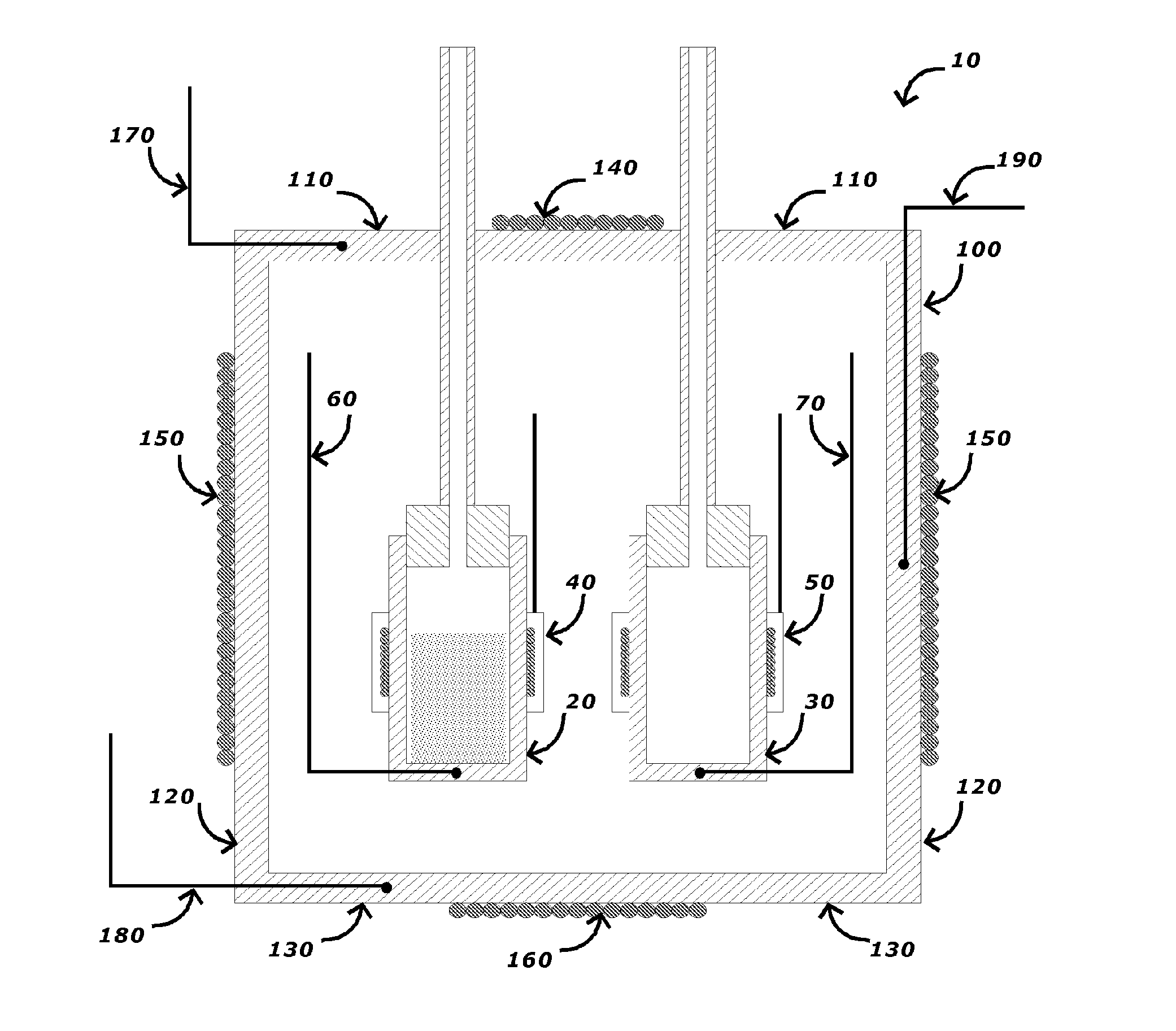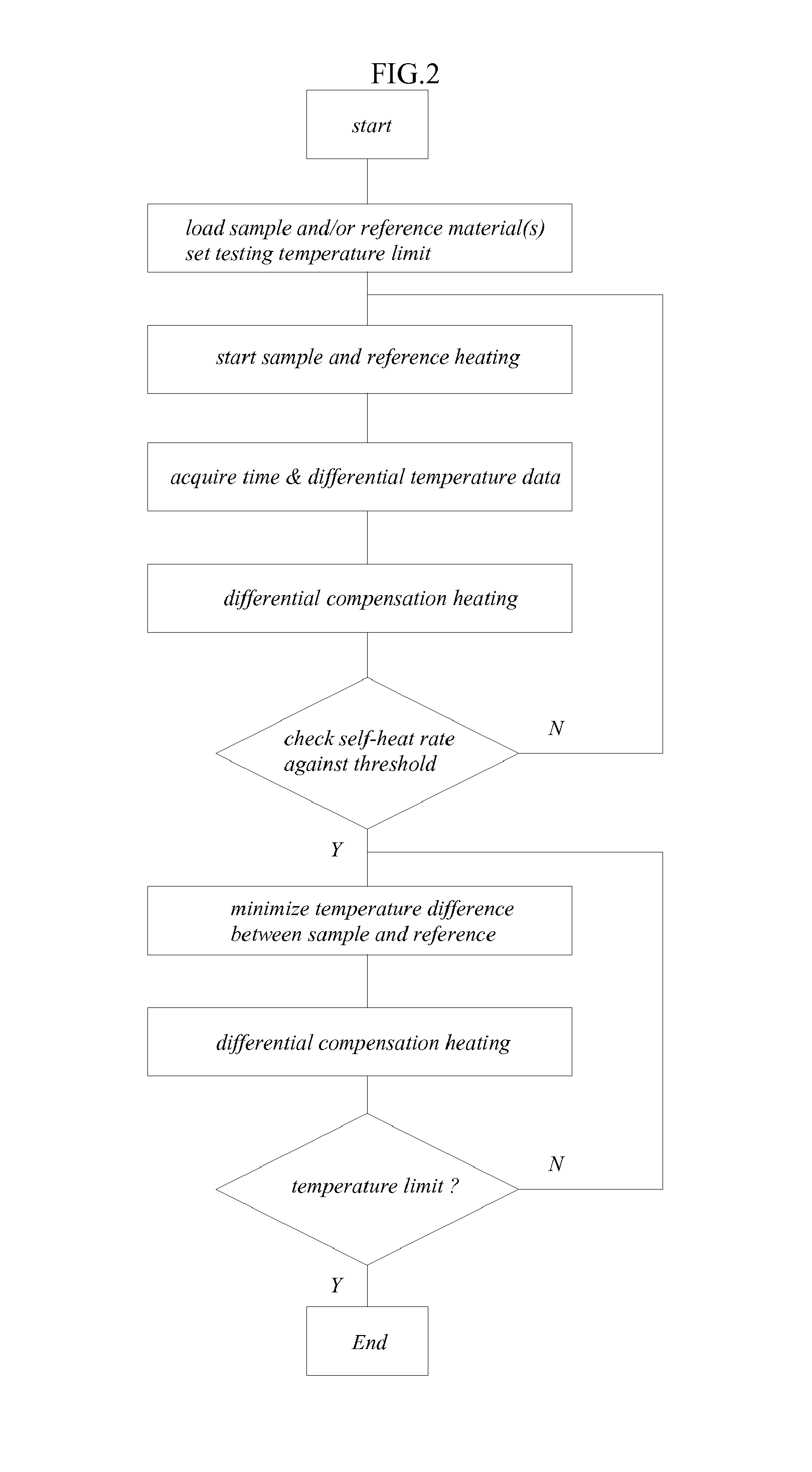Differential Adiabatic Compensation Calorimeter and Methods of Operation
a compensation calorimeter and adiabatic technology, applied in calorimeters, instruments, material thermal analysis, etc., can solve the problems of significant temperature excursion, single-channel scanning calorimeters, and devices without reference channels, so as to simplify testing procedures and eliminate control errors
- Summary
- Abstract
- Description
- Claims
- Application Information
AI Technical Summary
Benefits of technology
Problems solved by technology
Method used
Image
Examples
Embodiment Construction
[0021]A cross-sectional view of an embodiment of a differential adiabatic compensation calorimeter is shown in FIG. 1. As shown in FIG. 1, the calorimeter 10 comprises: a sample container 20, a reference container 30; a heat compensation control system, and an adiabatic chamber 100 disposed around the sample container 20 and the reference container 30, and a chamber temperature control system. In a preferred embodiment, the sample container 20 and the reference container 30 have an identical construction to minimize any differences in their thermal behavior.
[0022]In an embodiment, the sample container 20 is disposed within an adiabatic chamber 100. The sample container 20 may be made from any suitable materials for the desired sample conditions (e.g., temperature, pressure, chemical composition, etc.). Suitable materials for the sample container 20 include, but are not limited to, various metals such as stainless steels, titanium alloys, Monel™ alloys, Hastelloy C™ alloys and combin...
PUM
 Login to View More
Login to View More Abstract
Description
Claims
Application Information
 Login to View More
Login to View More - R&D
- Intellectual Property
- Life Sciences
- Materials
- Tech Scout
- Unparalleled Data Quality
- Higher Quality Content
- 60% Fewer Hallucinations
Browse by: Latest US Patents, China's latest patents, Technical Efficacy Thesaurus, Application Domain, Technology Topic, Popular Technical Reports.
© 2025 PatSnap. All rights reserved.Legal|Privacy policy|Modern Slavery Act Transparency Statement|Sitemap|About US| Contact US: help@patsnap.com



